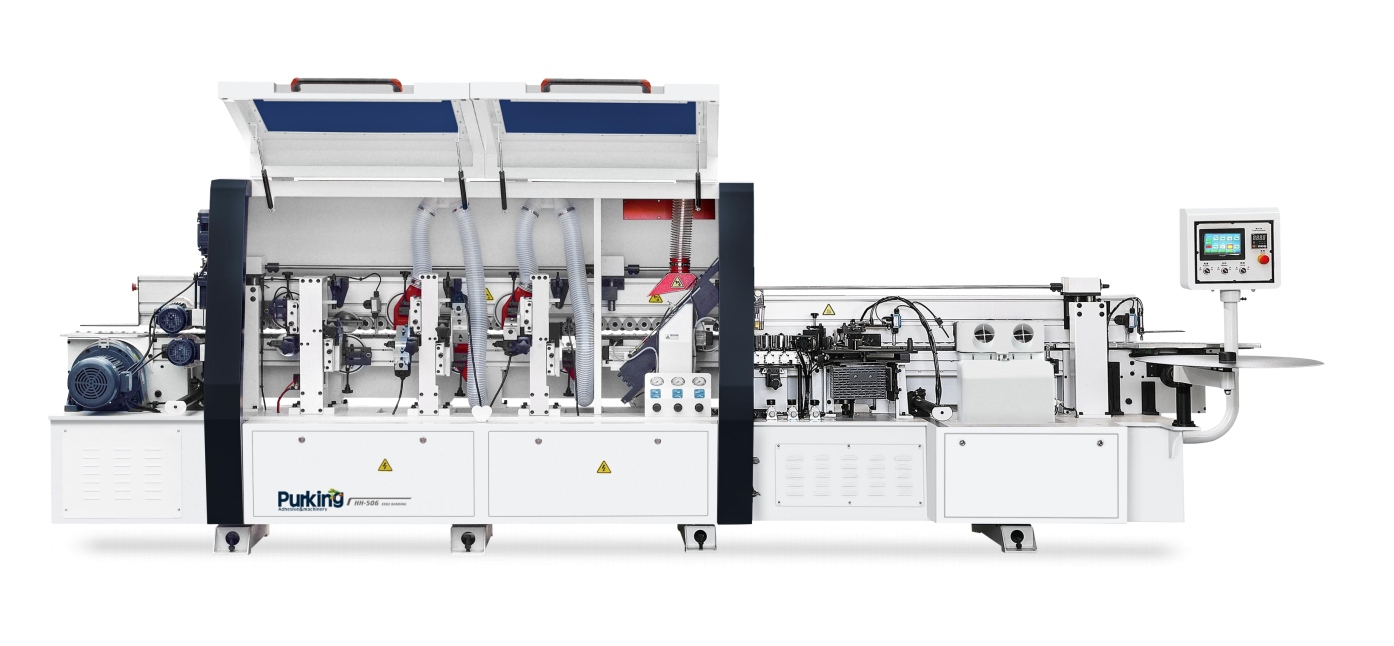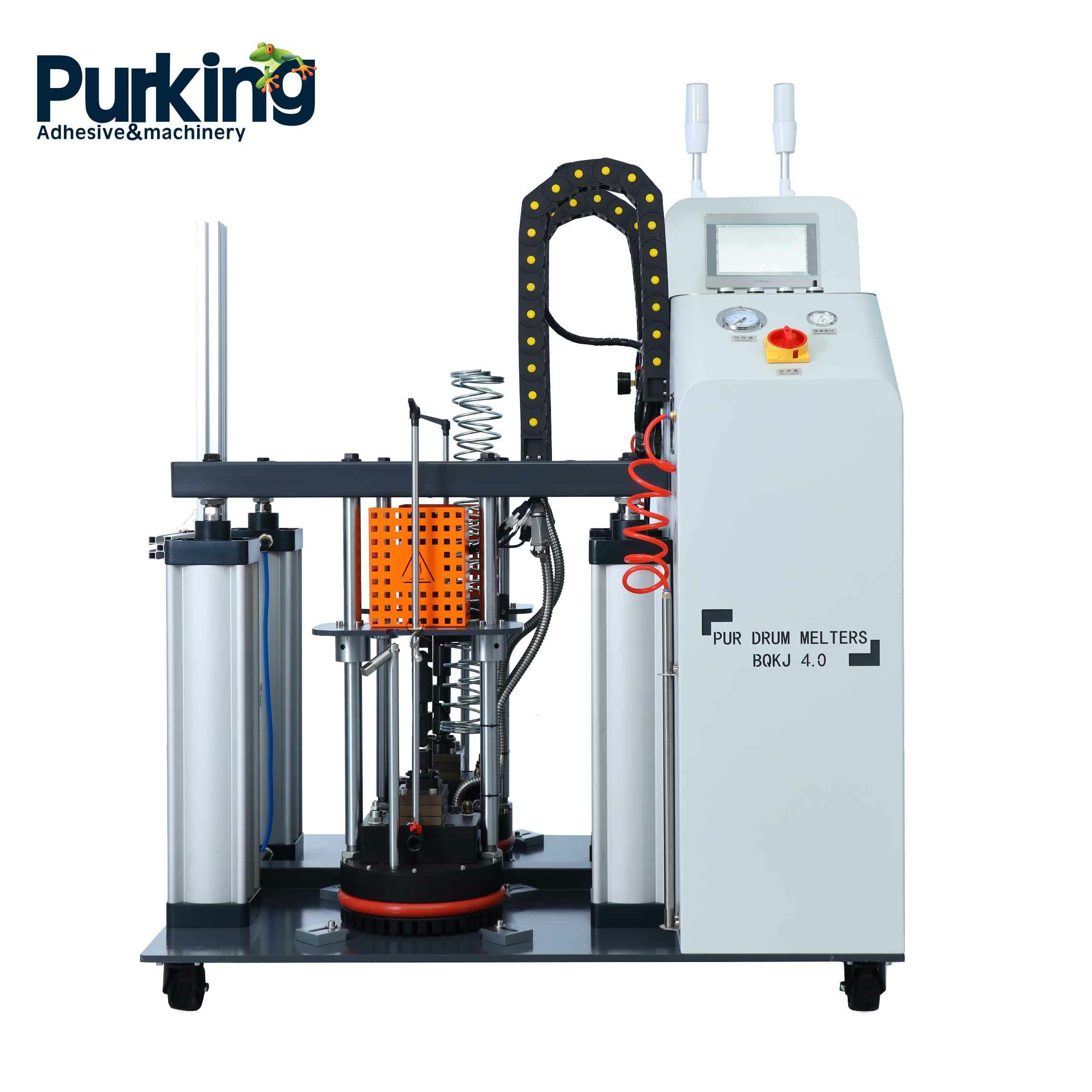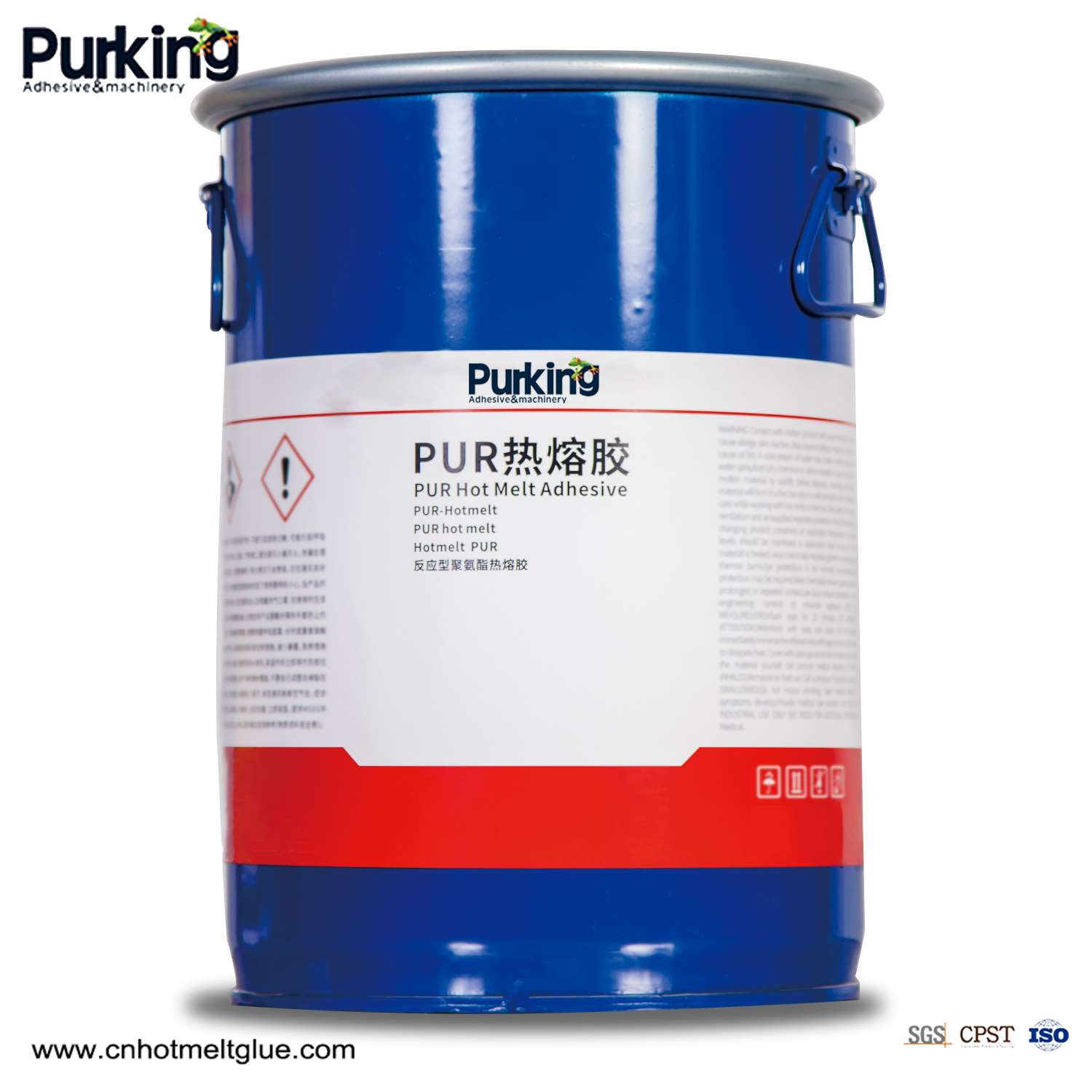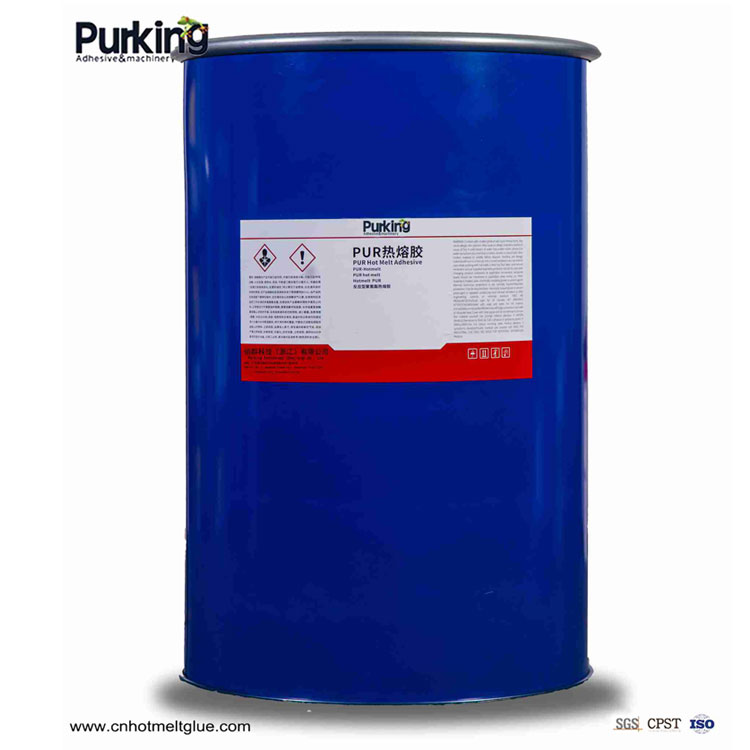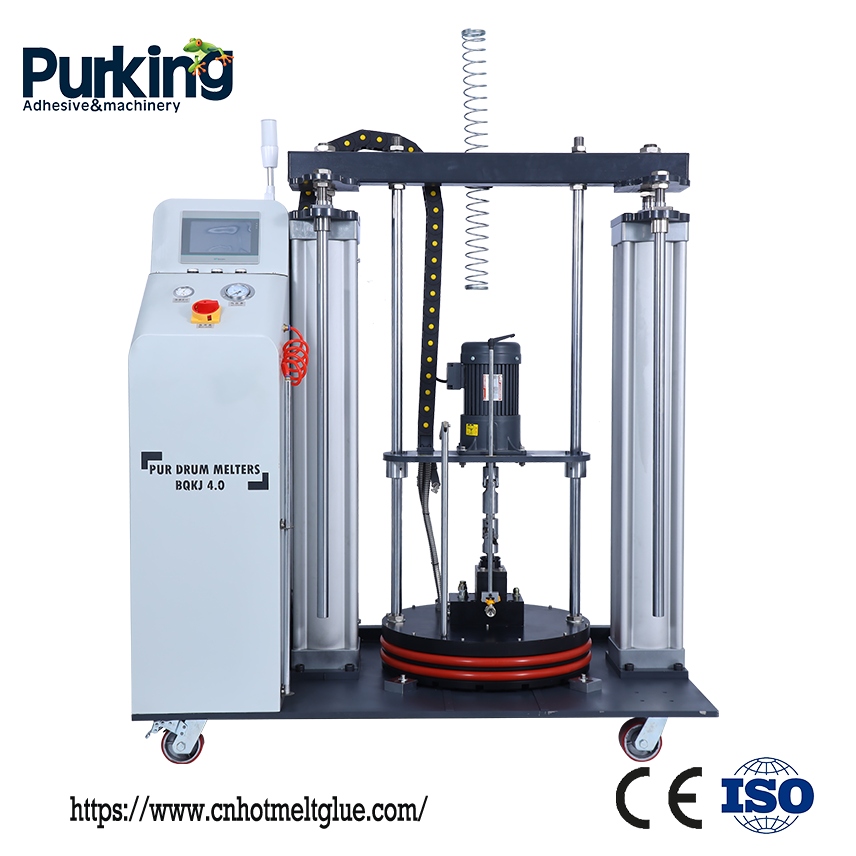Pressure sensitive adhesives are mainly acrylic and rubber-based solvent-based or latex-based adhesives. Hot-melt pressure-sensitive adhesive (PSA) is an adhesive based on thermoplastic polymers. It combines the characteristics of hot-melt adhesives and pressure-sensitive adhesives. It is solvent-free, pollution-free, and easy to use. It is applied in a molten state, and when it cools and solidifies, light finger pressure is applied to bond. It has a wide range of applications and can be used in diapers, women's products, double-sided tapes, labels, packaging, medical and health care, book binding, surface protection films, wood processing, wallpaper and shoe making, etc. Among them, the consumption of PSA for packaging is the largest , accounting for almost half of the total.
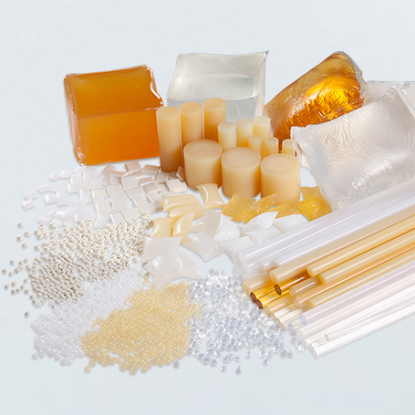
Styrene-based thermoplastic elastomers are mostly used as the main component of hot-melt pressure-sensitive adhesives. The advantage of hot-melt pressure-sensitive adhesive is that it is solvent-free, so there is no air pollution, and the productivity is high. But the disadvantage is that the heat resistance and cohesion are insufficient. New thermoplastic elastomers such as SEBS, SEPS, and epoxidized SBS are used to prepare higher-performance hot-melt pressure-sensitive adhesives. The new acrylate block copolymer has heat resistance, oxidation stability, UV stability, good adhesion to HDPE, stainless steel, glass, polystyrene, acrylic board, polycarbonate, nylon, polypropylene and other materials, and can be used in Making medical tapes, transparent films, labels, etc. Acrylic polymer is combined with water-soluble polymer to make water-dispersible hot-melt pressure-sensitive adhesive. Acrylic polymer is dispersed into non-adhesive particles below 100μm in weak alkali aqueous solution, which are easy to separate and suitable for old paper recycling. Acrylic acid ester monomers containing benzophenone groups are copolymerized to obtain low Tg acrylic acid copolymers, which can be used to make hot-melt pressure-sensitive adhesives, which are easily cross-linked by UV irradiation. The advantage is that there is no need to add photoinitiators, and there is no problem of initiator residue. Capable of low-temperature (120-140°C) hot-melt coating, low VOC, low odor, no skin irritation, and good thermal stability.
Composition of pressure sensitive adhesive
Adhesive tape is a special type of adhesive, that is, the glue is applied to the substrate and processed into a strip and supplied on a reel, including solvent-activated adhesive tape, heating adhesive tape and pressure-sensitive adhesive tape. For example, adhesive plasters and electrical insulating adhesives used daily in medicine are pressure-sensitive adhesive tapes.
Composition of pressure sensitive tape
①Pressure sensitive adhesive
② Substrate
③Bottom treatment agent
④Back treatment agent
⑤ Release paper
The main components of pressure sensitive adhesives include rubber type and resin type, such as polyacrylate or polyvinyl ether. Cotton cloth, glass cloth or non-woven fabric, etc. (2) plastic films such as PE, PP, PVC and polyester film, (3) paper such as kraft paper, glass transparent paper, etc., the original thickness of the substrate is between 0.1-0.5mm between.
The role of the bottom treatment agent is to increase the adhesive strength between the adhesive and the substrate, so that when the adhesive tape is removed, it will not cause the adhesive to separate from the substrate and stain the surface to be adhered, and to make the adhesive tape reusable. Commonly used primers are chloroprene rubber partially vulcanized with isocyanate, modified chlorinated rubber.
The back treatment agent is generally made of materials such as polyacrylate, PVC, cellulose derivatives or organic silicon compounds. It can act as a release agent. If a double-sided adhesive tape needs to be added with a layer of release paper such as a semi-rigid PVC film , PP film or kraft paper.
Adhesive properties of pressure sensitive adhesive
Pressure-sensitive adhesive does not need to be heated, and can be bonded with finger pressure. It is an adhesive with anti-peel strength. Its adhesion characteristics are four elements: T (fast adhesion) cohesive strength of the adhesive layer; K-adhesive base Force is the adhesion between the adhesive and the substrate.
The combination of pressure sensitive adhesive
1. Pressure-sensitive adhesives based on natural rubber: such as medical adhesive plaster and electrical insulating tape.
2. Pressure-sensitive adhesive of synthetic rubber matrix: styrene-butadiene rubber, polyisobutylene and base rubber are commonly used as the main components. For example, transparent pressure-sensitive tape is a polymer of polyisobutylene elastomer mixed with semi-liquid in a certain proportion and then coated on a transparent substrate. Up.
3. Vinyl polymer pressure sensitive tape. Mainly polyvinyl phenyl ether and polyacrylate two types.
Influence of pressure-sensitive adhesive properties
1. The influence of main components
The performance of pressure-sensitive adhesives varies with different compositions. Rubber-type pressure-sensitive adhesives are mainly made of natural rubber. Due to their high relative molecular weight, low glass transition temperature, and good compatibility with tackifying resins, the pressure-sensitive adhesives produced are Sensitive adhesive has good stickiness, good low temperature performance, good fast tack and adhesion, but the main disadvantage is poor aging resistance. Acrylate pressure-sensitive adhesive is mainly composed of acrylate monomers, which has good transparency, cohesive strength and adhesive performance, especially for polar adherends and porous surfaces. Excellent aging resistance.
The main components of thermoplastic elastomer pressure-sensitive adhesives are styrene-based elastomers SIS and SBS. The prepared solvent-based pressure-sensitive adhesives have high walk-on content, low viscosity, high cohesive strength, and high peel strength. Because the molecular structure contains double bonds, it is not resistant to aging, but the aging resistance will be greatly improved after oxidation.
Silicone pressure-sensitive adhesives are mainly composed of silicone rubber and silicone resin. They have very good high and low temperature resistance, and have good adhesion properties to polyolefins and fluoropolymers.
2. The influence of relative molecular mass and its distribution
The relative molecular mass and its distribution have a great influence on the various properties of the pressure-sensitive adhesive. When the relative molecular mass of the pressure-sensitive adhesive is reduced, the bulk viscosity can be reduced, which is beneficial to the wetting of the surface of the adherend, thereby improving the interface adhesion. work together. However, when the relative molecular weight is too low, the cohesive strength is poor, and the adhesive layer is prone to cohesive failure during peeling. Increasing the relative molecular mass can improve cohesion, but too large relative molecular mass will hinder dispersion and wetting. Therefore, the relative molecular mass of the pressure-sensitive adhesive must be within a certain range to obtain good adhesive performance. The relative molecular mass distribution also has a great influence. Generally, pressure-sensitive adhesives with a wider relative molecular mass distribution have better adhesive properties.
3. Effect of glass transition temperature
The glass transition temperature Tg has a great influence on the performance of pressure-sensitive adhesives. For pressure-sensitive adhesives with different Tg, the bulk viscosity and elastic modulus will increase at room temperature, and the peel strength will decrease, and the pressure sensitivity will be lost. If the Tg is too low, the cohesive strength will Low, peeling damage will occur, therefore, the Tg of the pressure-sensitive adhesive must be kept within a certain temperature range, generally -20~600C.
Composition and coordination of thermoplastic elastomer pressure-sensitive adhesive
Thermoplastic elastomer is a new type of synthetic rubber developed after 1963. It has the insolubility and thermal processability of thermoplastics, and it has the elasticity of vulcanized rubber at room temperature without chemical crosslinking. Therefore, it is also called the third generation rubber. A typical thermoplastic elastomer is an A-B-A block copolymer, which is formed by terpolymerization of styrene (St), diene (D) and styrene (St), referred to as SDS. Specific varieties include SBS and SIS, etc. Its unique structure allows it to dissolve in certain organic solvents without plastication, and has a low melt viscosity at high temperatures. PSAs with different properties were prepared by adding components with different compatibility with polystyrene (PS), polybutadiene (PB) and polyisoprene (PI). Due to the existence of unsaturated bonds in the PB and PI segments, it can also be modified by graft copolymerization. Thermoplastic elastomer pressure-sensitive adhesives mainly include solvent-based pressure-sensitive adhesives and hot-melt pressure-sensitive adhesives.
composition and coordination
Thermoplastic elastomer pressure-sensitive adhesive is composed of SBS, SIS, tackifying resin, softener, anti-aging agent, colorant, etc. Only when the components are properly coordinated can a pressure-sensitive adhesive with excellent performance be obtained.
1. SBS and SIS
SBS is a styrene-butadiene ternary block copolymer, and SIS is a styrene-isoprene-styrene ternary block copolymer, both of which have the dual characteristics of rubber and plastic, and are easy to source and moderately priced. Elastomeric component suitable for use in pressure sensitive adhesives.
According to its structure, SBS can be divided into two types: linear and star. The linear structure has a relatively low molecular weight and good solubility, but the cohesive strength is insufficient; the star-shaped structure has a relatively high molecular weight and a large cohesive strength, but High melting temperature. Therefore, SBS with a linear structure should be selected for the manufacture of pressure-sensitive adhesives. The ratio of the relative content of styrene (St) to butadiene (Bd) has a great influence on the performance. The larger the St/Bd, the smaller the viscosity and the stronger the adhesion, but the poorer elasticity and cold resistance; the smaller the St/Bd, the lower the viscosity. Increase, the elasticity increases, but the bonding strength and heat resistance decrease. The SBS used as pressure sensitive adhesive generally chooses St/Bd as 30/70.
SIS is an incompatible two-phase structure, and PS is dispersed into the continuous phase of polyisoprene to play the role of "vulcanization" and reinforcement. There are polyisoprene blocks in the structure, with multiple methyl side chains, and stronger adhesion, which is more suitable than SBS for making pressure-sensitive adhesives, especially hot-melt pressure-sensitive adhesives. The glass transition temperature of SIS is Tg1-550C, Tg21000C, high elasticity, not resistant to aging, resistant to water, alcohol, weak acid and weak alkali. Esters, ketones, aromatics, and hydrocarbons can dissolve or swell SIS.
2. Tackifying resin
Thermoplastic elastomer SIS itself has no initial tackiness, and must be added with a tackifying resin to have pressure-sensitive properties. The key to the performance of pressure-sensitive adhesives is the viscoelasticity of the adhesive. The function of the tackifier is mainly to impart the necessary viscosity to the pressure-sensitive adhesive. Since thermoplastic elastomers have a two-phase aggregate structure, it must be considered when selecting tackifying resins. compatibility of the two phases. Tackifying resins compatible with the rubber phase (PB, PI) in thermoplastic elastomers include rosin and rosin resin, terpene resins, C5 petroleum resins, etc., which impart the viscosity of pressure-sensitive adhesives and are compatible with plastic phase (PS) Adhesive resins include coumarone resin, aromatic petroleum resin, PS resin, etc., which can improve the cohesion of pressure-sensitive adhesives. There are also some tackifying resins that are compatible with both phases, such as high softening point terpene phenolic resins and low softening point aromatic hydrocarbon resins. Phenolic resins are incompatible with both phases of thermoplastic elastomers.
After adding tackifying resin and mixing with SBS and SIS, the glass transition temperature of the two phases measured by twisted braid analysis (TBA) has changed, which affects the pressure-sensitive adhesive and its performance. The terpene resin can greatly increase the Tg of the PB phase, and slightly reduce the Tg of the PS phase; the rosin resin has a greater influence on the Tg of the PB phase, but has little influence on the Tg of the PS phase; the Tg of the C5 petroleum resin PB phase has a higher increase Small, but the Tg of the PS phase changes greatly; aromatic petroleum resin (C9) is not very compatible with the two phases, and has little effect on Tg.
The terpene resin system has the best performance, with good fast tack and peel strength, and moderate stickiness. The overall performance of C9 petroleum resin is the worst.
Thermoplastic elastomers have two different structures. In addition to using terpene resin as the main tackifying resin, it is best to add an appropriate amount of other tackifying resins to adjust the overall performance of the pressure-sensitive adhesive. This method of mixing tackifying resins results in better performance pressure-sensitive adhesives.
The amount of tackifying resin is generally equal to or slightly more than that of thermoplastic elastomers. To be honest, as the amount of tackifying resin increases, the peel strength of the pressure-sensitive adhesive increases. When the peel strength reaches the peak value, the amount of tackifying resin increases. The peel strength drops sharply.
3. Softener
In addition to the tackifying resin must be added to the thermoplastic elastomer pressure-sensitive adhesive; a certain amount of softener (or plasticizer) must also be added to improve the performance of the pressure-sensitive adhesive, such as increasing the initial adhesion and reducing the pressure. Sensitive glue solution or melt viscosity can improve the coating process; it can also reduce the cost appropriately.
When choosing a softener, it is necessary to consider its compatibility with the two phases of the thermoplastic elastomer. The addition of a softener will change the glass transition humidity Tg of the two phases in the thermoplastic elastomer, which will directly affect the performance of the pressure-sensitive adhesive.
The choice of a good softener should only be compatible with the rubber phase, but completely insoluble in the plastic phase, and should not reduce the cohesive strength of the pressure-sensitive adhesive too much. In addition, softeners are also required to have low volatility, low viscosity, non-toxicity, aging resistance, and low price. The overall performance of the system using process oil (naphthenic oil) as a softener is ideal, and the aromatic content is 2% to 3%, which will also dissolve in the PS phase, resulting in a decrease in cohesive strength at room temperature or high temperature. It should be pointed out that phthalates (DBP, DOP) are compatible with PS in thermoplastic elastomers. When the pressure-sensitive adhesive is used to make PVC tape, the pressure-sensitive adhesive will be damaged due to the migration of the plasticizer to the adhesive layer. The cohesive strength is reduced. The impact of plasticizer migration on the performance of pressure-sensitive adhesives is more serious than that of natural rubber and synthetic rubber pressure-sensitive adhesives. It can be improved by grafting SBS adhesive on the PVC film primer.
4. Anti-aging agent
SDS thermoplastic elastomers contain unsaturated bonds, and are subjected to environmental factors such as oxygen, light, and heat to cause aging phenomena, especially when hot-melt pressure-sensitive adhesives are prepared and melt-coated at high temperatures, the aging is more serious. Therefore, an antioxidant based on an antioxidant must be added to the pressure-sensitive adhesive formulation. If no anti-aging agent is added when preparing the hot melt pressure sensitive adhesive, yellow coking will appear on the bottle wall at the gas-liquid phase junction. As the temperature rises, the color gradually becomes darker, which affects the appearance and performance of the product. Actual tests show that the peel strength of the pressure-sensitive adhesive added with anti-aging agent is about 30% higher than that without anti-aging agent.
There are many kinds of anti-aging agents, the commonly used ones are N, N-dibutylsulfurized aminobenzoate zinc (BZ) and ethylphenyl dithiocarbamate zinc (PX), the color is light and not easy to oxidize, and the dosage is generally thermoplastic elastic 2%~5% of the body. Aniline anti-aging agents themselves are easy to oxidize and turn black, so they are not suitable for the preparation of hot-melt pressure-sensitive adhesives. Often several anti-aging agents are used in combination for better results.
5. Cross-linking agent
The cohesive strength and holding force of thermoplastic elastomer pressure-sensitive adhesives will decrease rapidly at high temperatures. In order to improve the high-temperature performance of pressure-sensitive adhesives, it is necessary to add some crosslinking agents to the formula to chemically change the double bonds of unsaturated rubber. Cross-linking, to improve the cohesive strength and holding power of pressure-sensitive adhesives, commonly used cross-linking agents include sulfur or sulfur carriers, peroxides and reactive phenolic resins. The amount of sulfur or sulfur carrier is 0.3%~1.5%, and 0.3%~1.0% vulcanization accelerator and 0.3%~1.0% zinc oxide and stearic acid are also added. The effective amount of peroxide is generally 1%~4%, and the effect of adding 5%~25% active acrylate monomer (such as ethylene glycol diester methacrylate, etc.) at the same time is better.
6. Colorant
Colored pressure-sensitive adhesives can be made by adding pigments and fillers to the thermoplastic elastic pressure-sensitive adhesive formula, and white pressure-sensitive adhesives can be made by adding an appropriate amount of titanium dioxide.
7. Other additives
In order to reduce the cost or increase the viscosity of some solvent-based pressure-sensitive adhesives, natural rubber or synthetic rubber can be used to replace part of the thermoplastic elastomer, but the compatibility between them must be paid attention to. Natural rubber and isoprene rubber are well compatible with SIS, while styrene-butadiene rubber and polybutadiene rubber can be used in SBS pressure-sensitive adhesive systems.
8. Guidelines for the formulation of thermoplastic elastomer pressure-sensitive adhesives
When designing the formula, it is necessary to be familiar with the influence of each component on the thermoplastic elastomer pressure-sensitive adhesive. Now it is summarized as follows:
(1) The tackifying resin compatible with the rubber phase and the softener soluble in the rubber phase can increase the initial tack, while the tackifying resin compatible with the plastic phase does the opposite.
(2) As the tackifying resin compatible with plastic increases, the 1800C peel strength increases; while it decreases with the increase of tackifying resin and softener compatible with rubber.
(3) Tackifying resins that are compatible with plastics make pressure-sensitive adhesives harder, and the elastic modulus and cohesive strength increase; while tackifying resins and softeners that are compatible with rubber. Quite the opposite.
(4) The maximum service temperature of the pressure-sensitive adhesive depends on the softening point of the tackifying resin compatible with the plastic, and increases with the increase of the amount of the tackifying resin.
(5) The minimum service temperature of the pressure-sensitive adhesive depends on the softening point of the tackifying resin compatible with the rubber, and decreases with the decrease of the amount of the tackifying resin.
(6) Any tackifying resin and softener compatible with rubber can significantly reduce the solution viscosity and melt viscosity of pressure-sensitive adhesives.
(7) Adding anti-aging agent can effectively improve the performance and quality of heat pressure sensitive adhesive.
(8) Adding inorganic pigments and fillers will increase the viscosity of the pressure-sensitive adhesive and change the appearance.
(9) Adding an appropriate crosslinking agent can improve the high temperature resistance of the pressure sensitive adhesive.
(10) Part of thermoplastic elastomer can be replaced by natural rubber or synthetic rubber, which can reduce cost and increase viscosity.
 English
English  Esperanto
Esperanto  Afrikaans
Afrikaans  Català
Català  שפה עברית
שפה עברית  Cymraeg
Cymraeg  Galego
Galego  Latviešu
Latviešu  icelandic
icelandic  ייִדיש
ייִדיש  беларускі
беларускі  Hrvatski
Hrvatski  Kreyòl ayisyen
Kreyòl ayisyen  Shqiptar
Shqiptar  Malti
Malti  lugha ya Kiswahili
lugha ya Kiswahili  አማርኛ
አማርኛ  Bosanski
Bosanski  Frysk
Frysk  ភាសាខ្មែរ
ភាសាខ្មែរ  ქართული
ქართული  ગુજરાતી
ગુજરાતી  Hausa
Hausa  Кыргыз тили
Кыргыз тили  ಕನ್ನಡ
ಕನ್ನಡ  Corsa
Corsa  Kurdî
Kurdî  മലയാളം
മലയാളം  Maori
Maori  Монгол хэл
Монгол хэл  Hmong
Hmong  IsiXhosa
IsiXhosa  Zulu
Zulu  Punjabi
Punjabi  پښتو
پښتو  Chichewa
Chichewa  Samoa
Samoa  Sesotho
Sesotho  සිංහල
සිංහල  Gàidhlig
Gàidhlig  Cebuano
Cebuano  Somali
Somali  Тоҷикӣ
Тоҷикӣ  O'zbek
O'zbek  Hawaiian
Hawaiian  سنڌي
سنڌي  Shinra
Shinra  Հայերեն
Հայերեն  Igbo
Igbo  Lëtzebuergesch
Lëtzebuergesch  Malagasy
Malagasy  Sundanese
Sundanese  Yoruba
Yoruba  Español
Español  Português
Português  русский
русский  Français
Français  日本語
日本語  Deutsch
Deutsch  tiếng Việt
tiếng Việt  Italiano
Italiano  Nederlands
Nederlands  ภาษาไทย
ภาษาไทย  Polski
Polski  한국어
한국어  Svenska
Svenska  magyar
magyar  Malay
Malay  বাংলা ভাষার
বাংলা ভাষার  Dansk
Dansk  Suomi
Suomi  हिन्दी
हिन्दी  Pilipino
Pilipino  Türkçe
Türkçe  Gaeilge
Gaeilge  العربية
العربية  Indonesia
Indonesia  Norsk
Norsk  تمل
تمل  český
český  ελληνικά
ελληνικά  ελληνικά
ελληνικά  український
український  Javanese
Javanese  فارسی
فارسی  தமிழ்
தமிழ்  తెలుగు
తెలుగు  नेपाली
नेपाली  Burmese
Burmese  български
български  ລາວ
ລາວ  Latine
Latine  Қазақша
Қазақша  Euskal
Euskal  Az?rbaycan
Az?rbaycan  Az?rbaycan
Az?rbaycan  Slovensky jazyk
Slovensky jazyk  Македонски
Македонски  Lietuvos
Lietuvos  Eesti Keel
Eesti Keel  Română
Română  Slovenski
Slovenski  मराठी
मराठी  Srpski језик
Srpski језик 



